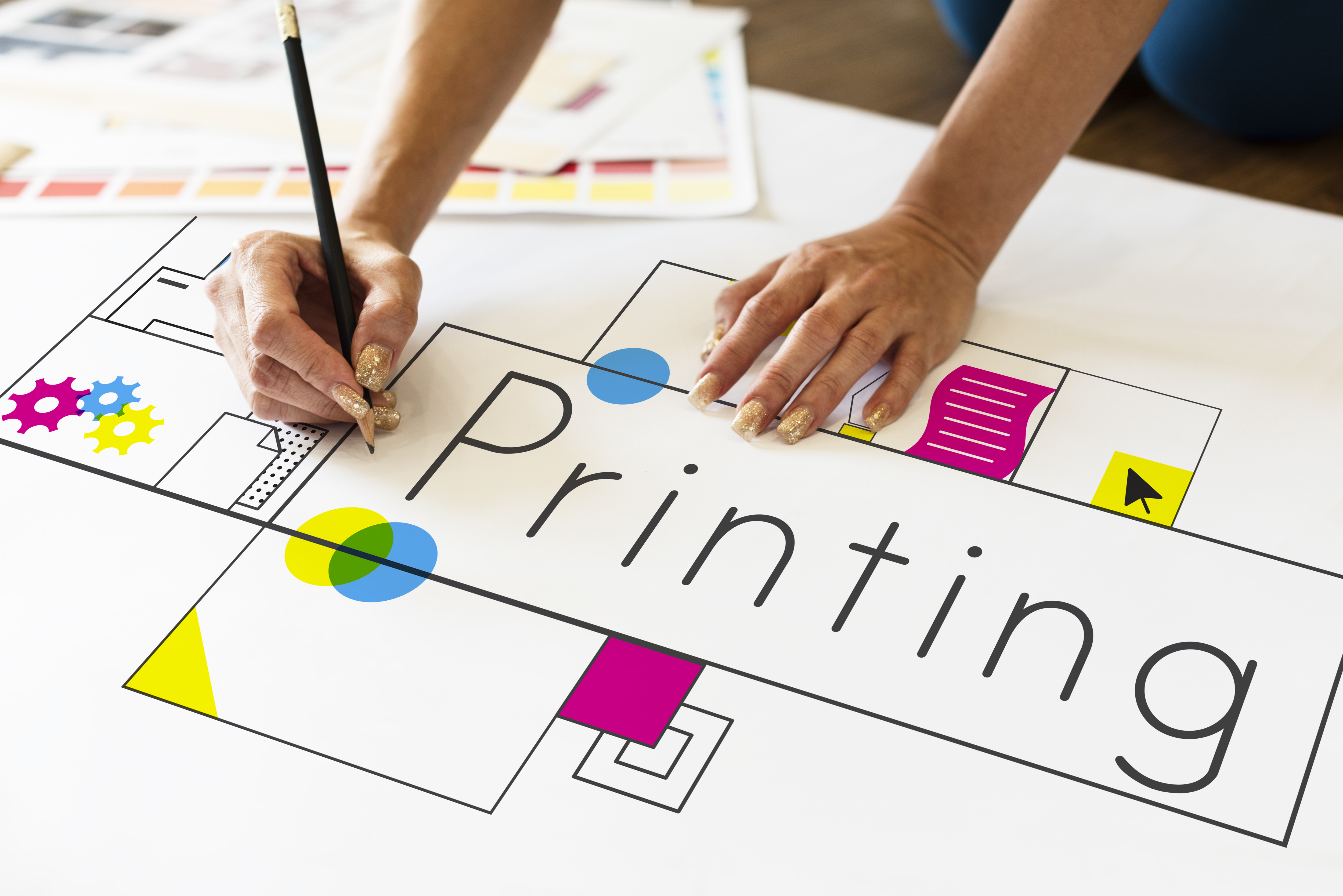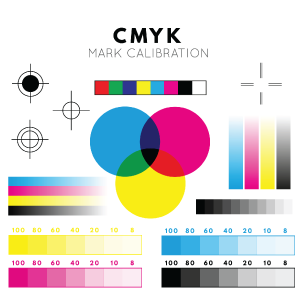Logout
Are you sure want to logout?
Yes
No

Full Name
Enter full name
Contact Number
Enter contact number
Enter valid contact number
Email Address
Enter email address
Enter valid email address

5 Oct 2021

5 Oct 2021
In the previous blog, we had a glance at shades of Yellow, Orange, Red, Green, Purple, and Blue colors that are considered an excellent color choice to grab the attention of anyone easily in the business.
After going through the title, you might think that what is the concept behind the color codes, right? There is a slight difference between the color codes and the attention catching colors.
In this blog, we are going to look the types of color codes and their description in short.
Pantone colors are also called Spot colors. The Pantone Matching System is referred to as a system of thousands of numbered swatches. Most corporate colors, in a logo, are identified with a number from this system. These are referred to as PMS numbers.
When we refer to swatches, choose by number, and then the color is pre-mixed before application. This is considered good for applications that are one or two colors; for example, as a business card.
Color plays a major role in terms of brand identity. Color codes count a lot when it comes to brand identity, and this is where the Pantone Matching System (PMS) comes into play at the priority level in the branding strategy, and promotional strategy. Because the colors are those which play a crucial role in giving a name to the brand.
The PMS also makes it possible for companies to have a consistent color scheme for all their branding and promotional efforts. This will ring true regardless of what kind of collateral they make since the PMS ensures that all materials with the same Pantone color match.

CMYK is also called 4-color or process. CMYK refers to full-color printing. Because of the potential confusion with the words and abbreviations for blue and black, blue is called cyan and abbreviated C, and black is abbreviated as K.
The human eye needs to blend these colors to see the full spectrum. CMYK is used whenever there are full-color images, or when the number of colors makes it more practical than using just PMS colors. CMYK is also the primary system for digital printing, as specific Pantone colors can not be put into an inkjet or laser printer.
Full color, offset (professional) printing is always CMYK. However, a large press can accommodate the four colors of cyan, magenta, yellow, and black plus additional Pantone colors if necessary. Sometimes that is done if there are photos that require CMYK, but a logo that prints best used the actual Pantone ink. In such a case, it would be called a five-color print job.
The CMYK color mode should be used for any logo that will be seen printed on physical things more than on a screen. In addition, if a logo will be recreated in other mediums such as painting, CMYK is also better.
Many brands have logos that need to be displayed in space. Situations that require a printed brand logo require the CMYK color mode to be used. Some examples are Storefront signs.
If the designed logo is expected to be sold on buyable goods, it is especially important to design in the CMYK color mode. Customers would not want to buy any merchandise with the logo if colors do not match their web look. Examples of merchandise where a logo is visible could include T-shirts.
Logos show up constantly in advertising; for example, Billboards. Physical products and packaging are often where a brand logo is seen most. Any business which sells products for people to buy should have their logo made in CMYK so the package design can display the logo properly.
RGB is the color system for computer monitors, video, etc. It is for computer applications such as websites. These days, most computer monitors have better video cards and higher resolution and can view more than this limited palette. However, there is still some web-based design code that prefers these colors codes.
It is important to note that while these are called safe, that does NOT mean a color will look the same from one monitor to the next. Variability with screen brightness, lighting conditions, and hue & contrast settings will render the same color differently from one computer monitor to the next.
The main application of the RGB color model is to display digital images. It is used in cathode ray tubes, LCDs, and LED displays such as television, computer monitor, or large screens. Each pixel on these displays is built by using three small and very close RGB light sources. These colors cannot be distinguished separately at a common viewing distance and viewed as a single solid color.
The computer screen works in RGB (Red, Green, Blue) and not CMYK. It might seem that this does not make a difference to the final product while designing something.
A color monitor that is not set up to view CMYK will show the different colors to the ones that may be printed. This is because the RGB spectrum is much, much broader than CMYK, so colors can be created in this palette that would not be available in CMYK.

Hex color codes are values that tell the display how much of a color to show. The values are a special code that represents color values from 0 to 255.
If red, green, and blue are all at the minimum 0 (represented as 00 in the code), the color expressed is the color black. If red, green, and blue are all at the maximum 255 (represented as ff in the code), the color expressed is the color white.
The hex color values can combine to show more than 16 million different colors, and most will be somewhere between it. We can use a converter to convert the RGB numeric values into hex code as well.
But it may be helpful to memorize a few of the more colors common hexadecimal colors.
Hex colors are based on the RGB color model that has been in use since the early days of photography.
The theory behind the model is that you can create virtually any color the eye can see by assigning different combinations of red, green, and blue color values. On the web and most digital applications, a 0 to 255 color value scale is used. The RGB color model is used by televisions, digital cameras, and video projectors in addition to practically every computer and phone screen in existence.
RGB is a color gamut of light using red, green, and blue to render colors onscreen. When designing for web, digital, or TV the RGB color system is used. HEX, which stands for Hexadecimal, is also used onscreen and is a shortcode for RGB color.
A HEX color is a six-digit combination of letters and numbers. The first two numbers represent red, and the middle two represent green, and the last two represent Blue. In most programs, the HEX number automatically gets generated for you.
Within the brand guide, one should be sure to specify the PMS, CMYK, RGB, and HEX for each of the brand colors. In most cases, it is best to start with the PMS color and convert it to CMYK, RGB, and HEX.
The Pantone Color Bridge guide allows one to view a side-by-side visual comparison of the Pantone color versus the closest CMYK process printing match on coated and uncoated paper. Furthermore, it lets you choose a Pantone color that converts well to CMYK for the best color consistency across multiple platforms.
With this in mind, be sure to list all specific color breakdowns in your brand guide so that all users remain consistent in hitting your color targets. It is very important that you look at each color in its final format to confirm the color is similar across all platforms- doing so will ensure your branding remains consistent.
All of the above color codes share some unique connections. HEX, CMYK, RGB, and PMS are a few of the most common color models or matching systems that help connect what our eyes see with the colors we want to present in our materials. It helps to represent our innovative thoughts artistically. They are sets of numbers used to express the combination of color or light appealingly. It attracts the customers to get in touch with the brand, product, or service of the industry.
Color coding can help workers and learners recognize and internalize distinct steps in a series of tasks of the industry. The colored tape can separate sections of the work floor into different stages of assembly to highlight the steps behind the motion.
It can be used to encourage the safety of the industry while working. In a variety of work environments, such as health care and other business industries can lead to serious safety breaches. Color coding helps in uniquely building the identity.

Submit Design
Height and Width should be the same (e.g. 1000 x 1000)
Supported file formats : .JPG / .JEPG / .PNG